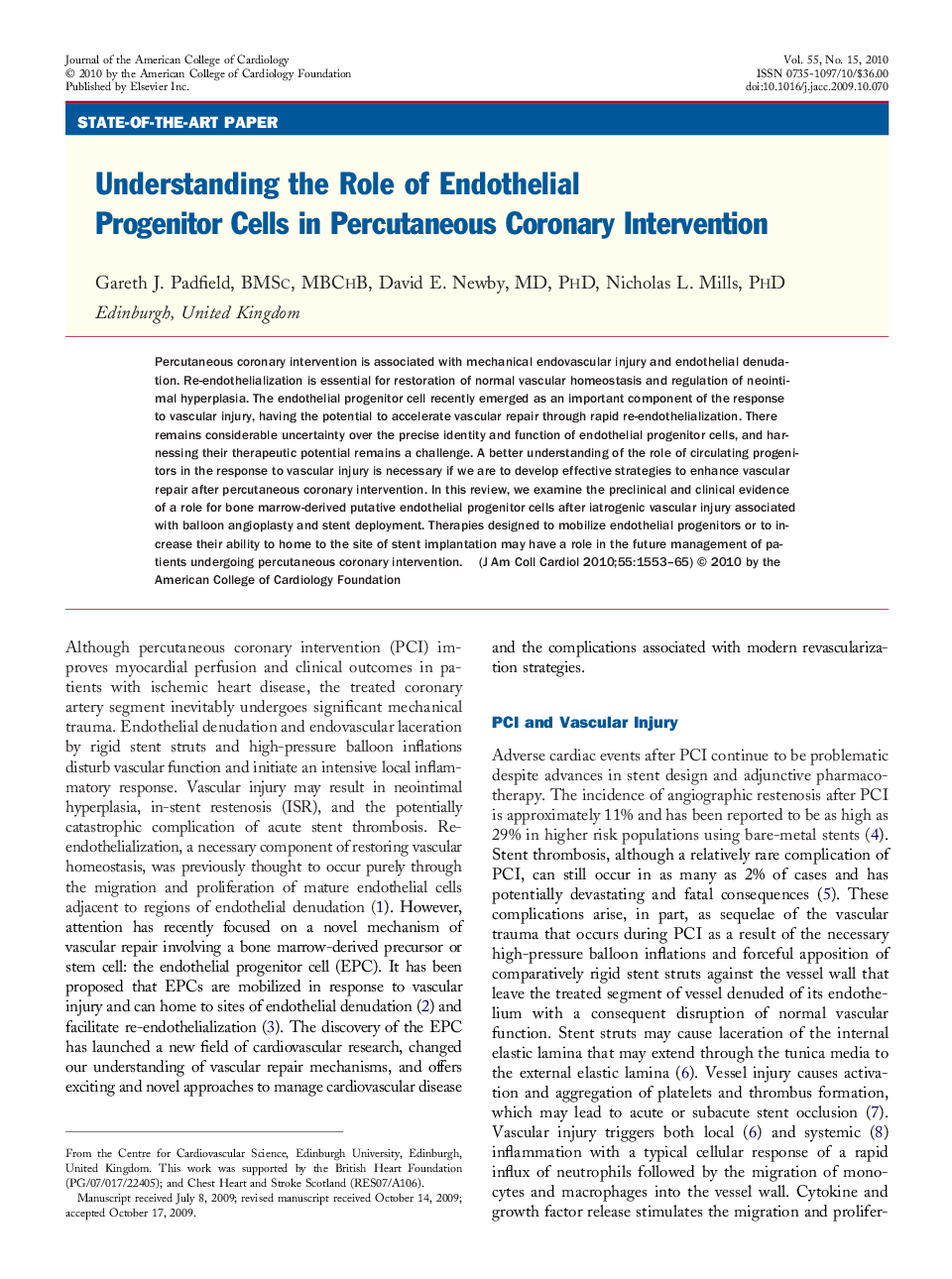| Article ID | Journal | Published Year | Pages | File Type |
|---|---|---|---|---|
| 2951311 | Journal of the American College of Cardiology | 2010 | 13 Pages |
Percutaneous coronary intervention is associated with mechanical endovascular injury and endothelial denudation. Re-endothelialization is essential for restoration of normal vascular homeostasis and regulation of neointimal hyperplasia. The endothelial progenitor cell recently emerged as an important component of the response to vascular injury, having the potential to accelerate vascular repair through rapid re-endothelialization. There remains considerable uncertainty over the precise identity and function of endothelial progenitor cells, and harnessing their therapeutic potential remains a challenge. A better understanding of the role of circulating progenitors in the response to vascular injury is necessary if we are to develop effective strategies to enhance vascular repair after percutaneous coronary intervention. In this review, we examine the preclinical and clinical evidence of a role for bone marrow-derived putative endothelial progenitor cells after iatrogenic vascular injury associated with balloon angioplasty and stent deployment. Therapies designed to mobilize endothelial progenitors or to increase their ability to home to the site of stent implantation may have a role in the future management of patients undergoing percutaneous coronary intervention.
